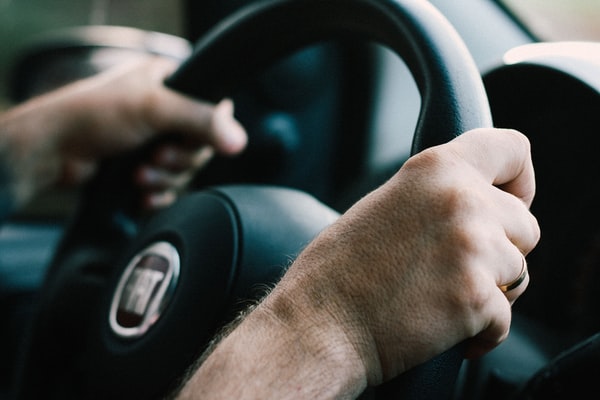
There’s always traffic. Even with no traffic, a 25 minute commute is long when we remind ourselves that the national average is just over 27 minutes one way. Add in the holiday traffic and the time might even be doubled.
 While we search for radio stations, listen to podcasts, and hunt for various things to keep our brain busy for the long drive, we slouch down, tense up or forget that we’re likely headed somewhere that’s about to ask us to use the same body parts we’re actively straining.
While we search for radio stations, listen to podcasts, and hunt for various things to keep our brain busy for the long drive, we slouch down, tense up or forget that we’re likely headed somewhere that’s about to ask us to use the same body parts we’re actively straining.
The online Sports Injury Clinic is aware that even active people still have long work commutes and they’ve noticed the direct correlation between complaints about back pain and time spent driving.
I’ve already discussed how, when I drive, my right shoulder rounds in and the effects that has on my jaw, neck and the tops of my shoulders. But the problems continue down my back.
As the right shoulder rounds in, my right side body twists and collapses, shortening the abdominal wall on one side. This adds to low back compression and the tightening of my right hip. My spine will begin to adopt a “C” shaped curve when proper alignment should represent an “S” shape.
 Our spines are made up of 24 stacked vertebrae. In between each vertebrae there is a pillow of fluids called intervertebral discs. When we sit for extended periods of time with poor posture, the discs are compressed and the water squeezes out of them. The lower the disc on the body, the more pressure.
Our spines are made up of 24 stacked vertebrae. In between each vertebrae there is a pillow of fluids called intervertebral discs. When we sit for extended periods of time with poor posture, the discs are compressed and the water squeezes out of them. The lower the disc on the body, the more pressure.
The best way to alleviate this pressure and retain fluid in these discs is to take frequent breaks.
I know, easier said than done. I often time out my day with multiple gigs or students and the calculated commute in between them does not include breaks. So here are three quick tips to help alleviate low back pain caused by driving.
1. Add a pillow to your car seat to encourage the “S” shape back into your spine.
Place the pillow at the base of the spine and tilt the front of your car seat down slightly. While it might sound ridiculous, almost every driving study or guide on low back pain out there (like this one) suggests that you belt this pillow in place to your body for trips longer than two hours.
2. When you're done driving, practice a squatting posture.
The earliest people didn’t sit, they squatted, and we should too. Squatting allows the lumbar discs to pull apart and the intervertebral discs to, once again, fill with fluid. It also allows the back muscles to relax, lengthening the tailbone down. For a guide on how to squat properly watch this quick YouTube video or follow @MusicianHealthResource on Instagram for daily tips.
Make sure when you finish driving, you do not immediately bend forward or try to pop, twist or stretch out your low back. If you have been sitting for an extended period of time and are headed into a rehearsal to sit for another extended period of time, the intervertebral discs are likely compressed and this means that any sudden movement or jarring to your low back could potentially increase damage and pain. It should also be noted that the vibrations of a moving car will accelerate the process at which the fluid exits the discs.
3. Grab an ice pack.
Just like a top athlete alternates hot and cold packs on sore muscles or inflamed joints, we should do the same. Our time in the car has increased the amount of sore muscles and inflamed joints in our back so, take a sock filled with cold rice or a frozen bag of peas, wrap it in a towel and lay down for a rest. The ice will not only reduce inflammation but also slow down nerve impulses to any pre-existing pain.
The sitting habits we have in our cars translate directly to the sitting habits we have in our work and vice versa. Just like we build a practice with our instrument, we need to build a practice with our body. Add in these three steps this week and let me know how they improve your posture and reduce your pain. Remember, your body should never limit your art so train like an athlete and play like a musician!
Health and happiness,
Karen




